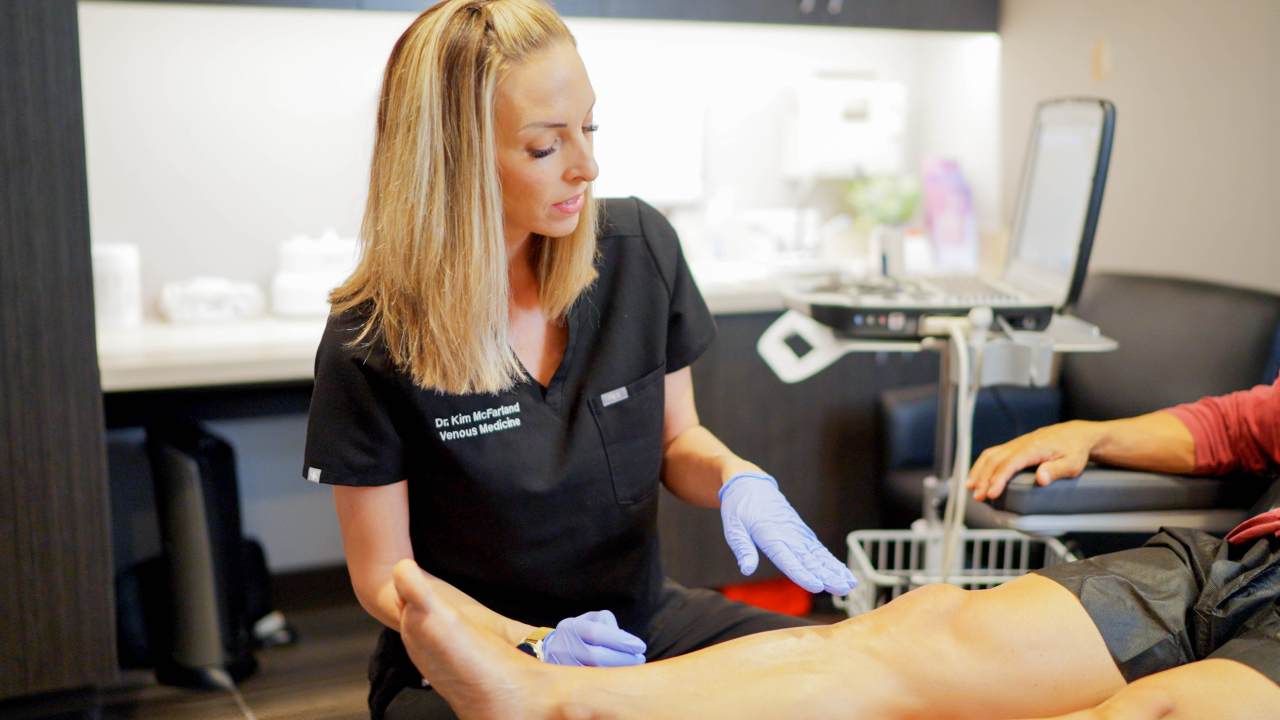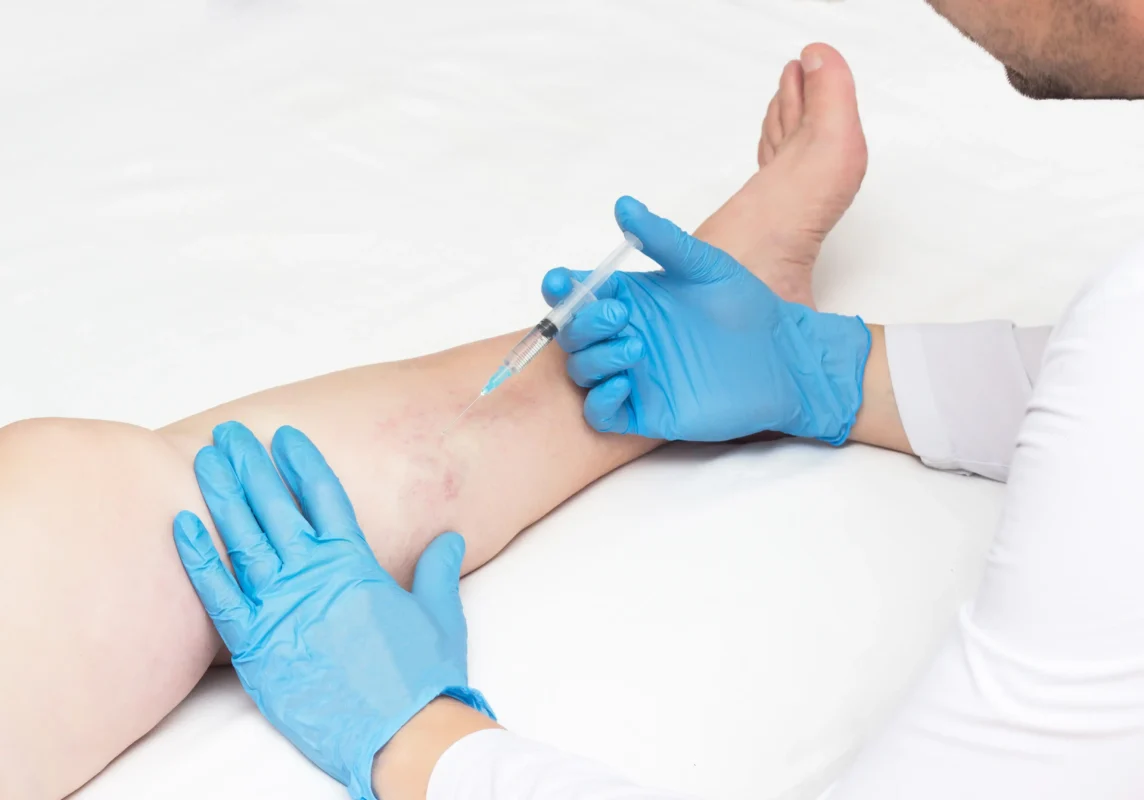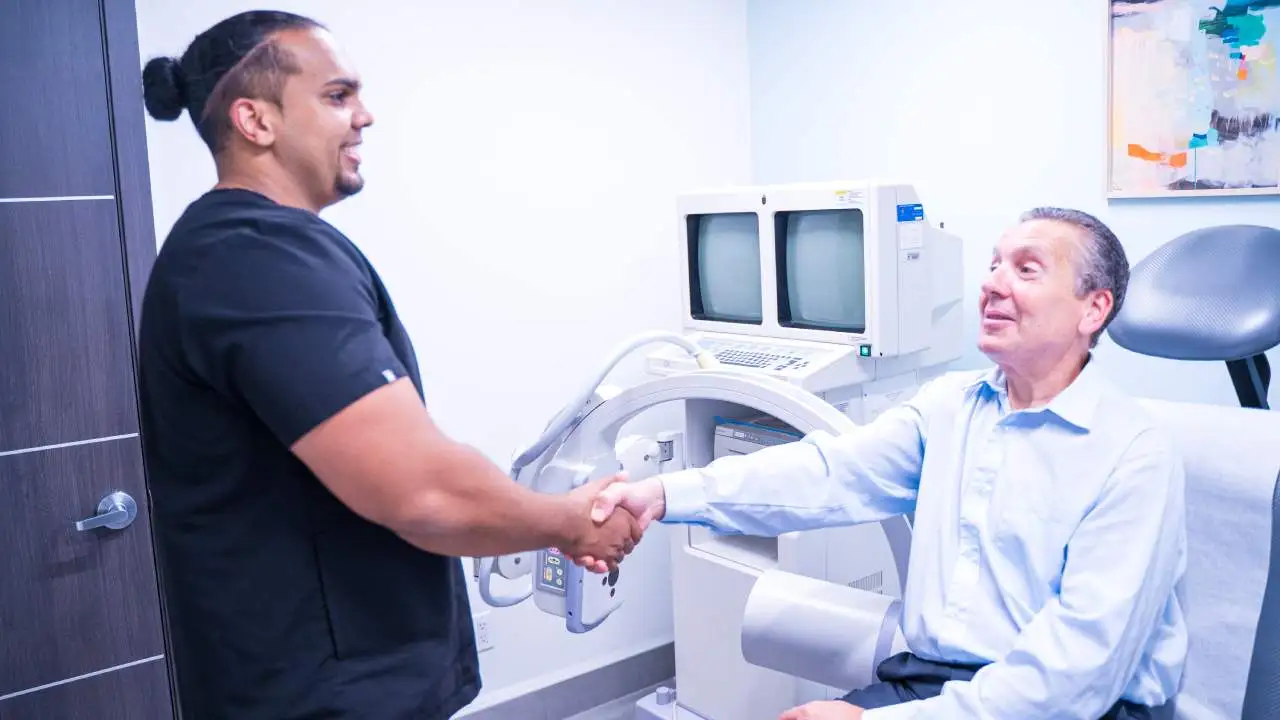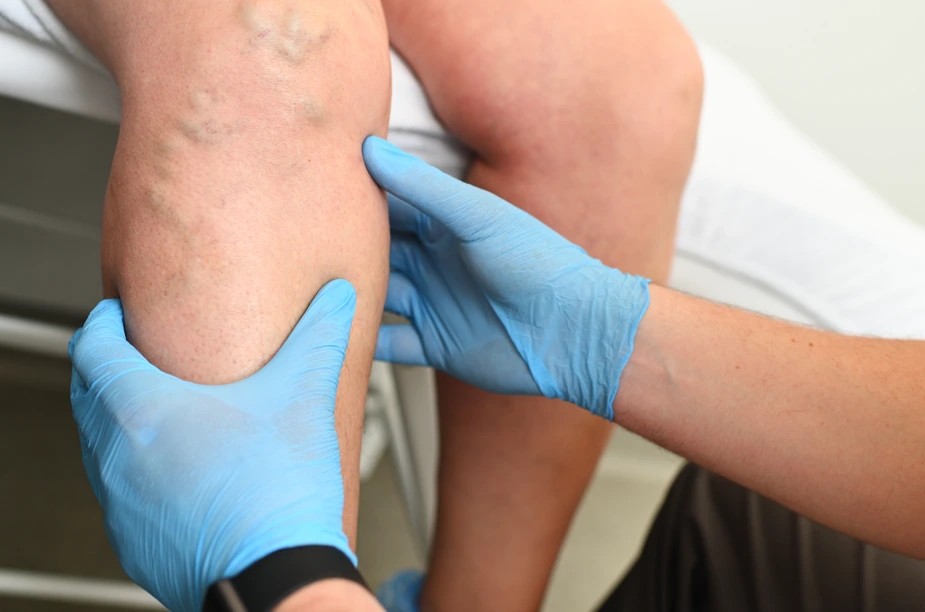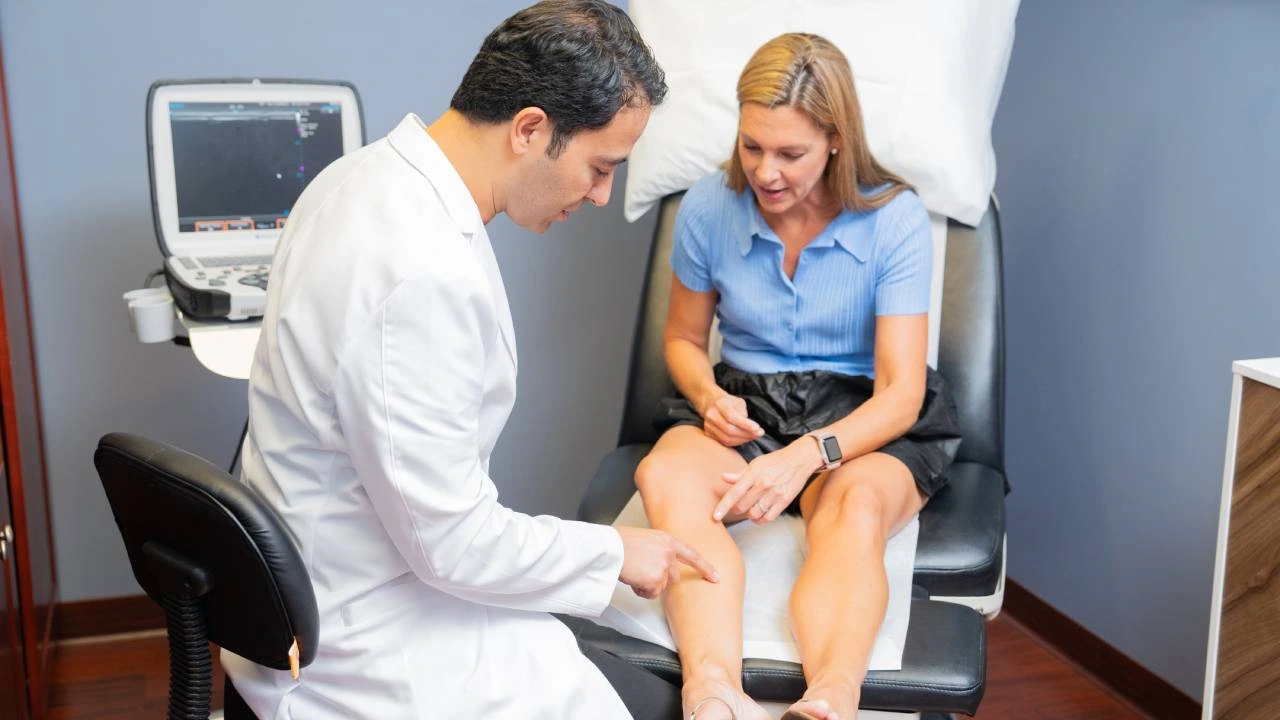You’re getting ready for a summer outing, excited to show off your favorite dress. But as you look down at your legs, the sight of bulging varicose veins makes you hesitate. You’re not alone. Many people struggle with varicose veins, and they’re not just a cosmetic concern. They can cause discomfort and pain and make your legs feel heavy, making even the simplest tasks feel difficult. However, several minimally invasive varicose vein treatments, including vein ablation, can effectively address this issue.
At Vein Treatment Clinic, our team of board-certified vein doctors specializes in minimally invasive treatments like vein ablation to treat varicose veins at their source. In this article, we discuss what vein ablation is, how it works, and why it might be the right solution for you.
What is Vein Ablation?
Vein ablation is a minimally invasive process that treats varicose veins by closing off the damaged veins that cause blood to pool and veins to bulge. This treatment is particularly effective for patients diagnosed with venous insufficiency, also known as venous reflux, a condition where the valves in your veins malfunction, leading to varicose veins.
During vein ablation, heat energy is delivered through a catheter to the affected vein, causing it to collapse and seal shut. Once the vein is closed, blood is naturally rerouted to healthier veins, improving circulation and reducing the symptoms associated with varicose veins. Over time, the body absorbs the treated vein, and the appearance of varicose veins diminishes significantly.
The Two Types of Vein Ablation
Endovenous Radiofrequency Ablation
Endovenous radiofrequency ablation (RFA) is one of the most common methods of vein ablation. In this treatment, a thin catheter is inserted into the affected vein through a small incision. The catheter emits radiofrequency energy, which heats the vein walls and causes them to collapse. This process is carefully monitored using ultrasound guidance to ensure precision. Once the vein is sealed, blood flow is redirected to nearby healthy veins.
Endovenous Laser Ablation
Endovenous laser ablation (EVLA) works similarly to RFA but uses laser energy instead of radiofrequency. A laser fiber is inserted into the vein, delivering laser pulses that generate heat. This heat causes the vein walls to collapse and close off. Like RFA, EVLA is performed under local anesthesia and is guided by ultrasound imaging to ensure accuracy. Patients typically experience minimal pain and a quick recovery.
What Happens During Vein Ablation?
When you undergo vein ablation at one of our state-of-the-art clinics, the treatment is straightforward and usually takes less than an hour. You’ll first be given local anesthesia to numb the treatment area, ensuring your comfort throughout the process. Your vein doctor will then insert a thin catheter into the affected vein, guided by ultrasound imaging for precision.
As the catheter is advanced, either radiofrequency or laser energy is applied to the vein walls. The heat generated by the energy source causes the vein to collapse and seal shut. Once the vein is closed, the catheter is carefully removed, and a small bandage is applied to the insertion site. You’ll be able to walk immediately after the process.
Advantages of Vein Ablation:
- Minimally invasive treatment
- Requires only local anesthesia
- Minimal discomfort and quick recovery
- High success rate in closing varicose veins
- Immediate relief from symptoms like heavy legs and pain
- No need for hospitalization
- Performed in an outpatient setting
- Covered by most medical insurance plans
What Happens After Vein Ablation?
After vein ablation, you may experience mild side effects like bruising, swelling, or slight discomfort at the treatment site. These symptoms typically resolve within a week. You’ll be encouraged to wear compression stockings for a few days to support your veins and improve circulation. It’s also important to walk regularly to promote healing and prevent blood clots.
Most patients notice an immediate improvement in symptoms like leg pain and heaviness. Over the following weeks, your body will gradually absorb the treated veins, and the appearance of varicose veins will diminish. While the results are long-lasting, it’s essential to maintain regular follow-ups with your vein doctor to monitor your progress and address any new symptoms.
Other Minimally Invasive Varicose Vein Treatments
ClariVein
ClariVein is a unique treatment that combines mechanical and chemical methods to treat varicose veins. A catheter with a rotating tip is inserted into the vein, where it simultaneously disrupts the vein lining and delivers a sclerosant, a solution that seals the vein. This dual-action approach effectively closes the vein with minimal discomfort and a quick recovery time.
VenaSeal
VenaSeal uses a medical adhesive to close off varicose veins. During the treatment, a catheter is inserted into the affected vein, and the adhesive is delivered along the length of the vein. The adhesive seals the vein, rerouting blood to healthier veins. VenaSeal is great for patients who want to avoid the use of thermal energy and compression stockings post-treatment.
Ambulatory Phlebectomy
Ambulatory phlebectomy is a process in which small varicose veins are removed through tiny incisions in the skin. This technique is ideal for veins close to the skin’s surface and can be done in conjunction with other treatments like vein ablation. The treatment is minimally invasive, leaves minimal scarring, and provides immediate results.
Sclerotherapy
Sclerotherapy is a popular treatment for spider veins and small varicose veins. A sclerosant is injected directly into the affected veins, causing them to collapse and be absorbed by the body over time. While sclerotherapy can help get rid of spider veins, it can be combined with vein ablation for a comprehensive treatment of spider veins and the root cause.
At Vein Treatment Clinic, we offer all these treatments and more. Visit your nearest vein clinic in New York, Long Island, California, Maryland, or New Jersey to find out which treatment is best for your specific needs. Vein ablation is a highly effective, minimally invasive solution for treating varicose veins and alleviating the discomfort associated with venous insufficiency.
With board-certified vein doctors at Vein Treatment Clinic, you can trust that you’re in expert hands. Most vein treatments are covered by medical insurance, so don’t hesitate to contact us to request insurance verification today.


